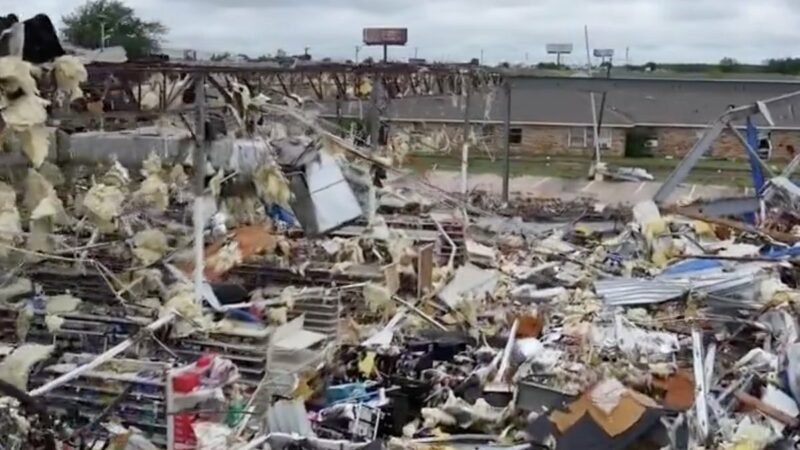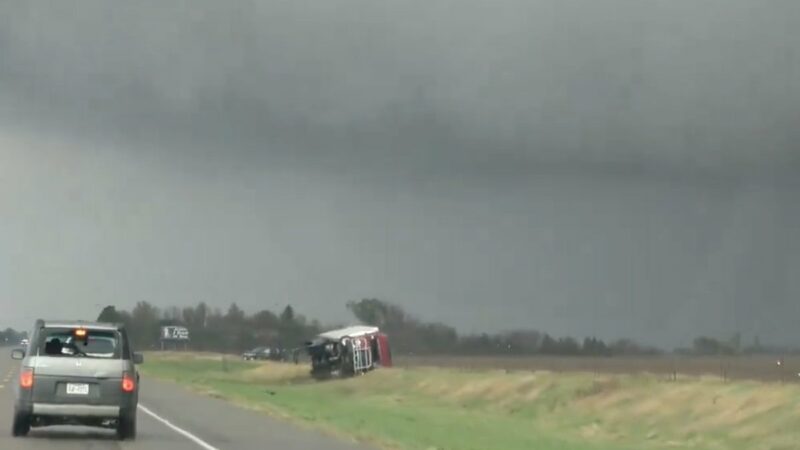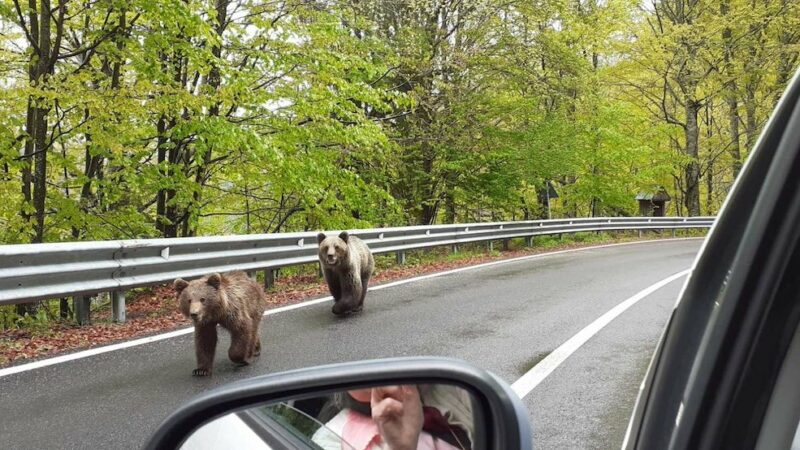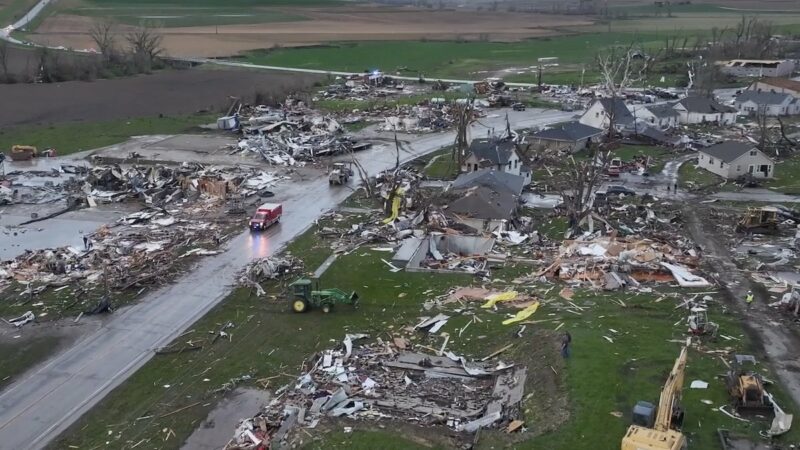Stuck on a Slab: How I Survived a Night Stranded in Red Rock Canyon
Red Rock Canyon encompasses a nearly 200,000 acre wilderness just 20 minutes from the Las Vegas strip in the Mojave Desert. Not only a tourist destination with unusual geological formations, this unique park used to be a home to dinosaurs. Today, it’s filled with hikers and climbers out to conquer the big sandstone walls, like me. With warm weather most of the year and every type of climbing from bouldering to sport to trad, this park has a project for everyone.
Even though there are around two thousands climbing routes in Red Rock, many of the more difficult walls can leave even the most talented climbers off route or worse.
Videos by Outdoors
The Mission
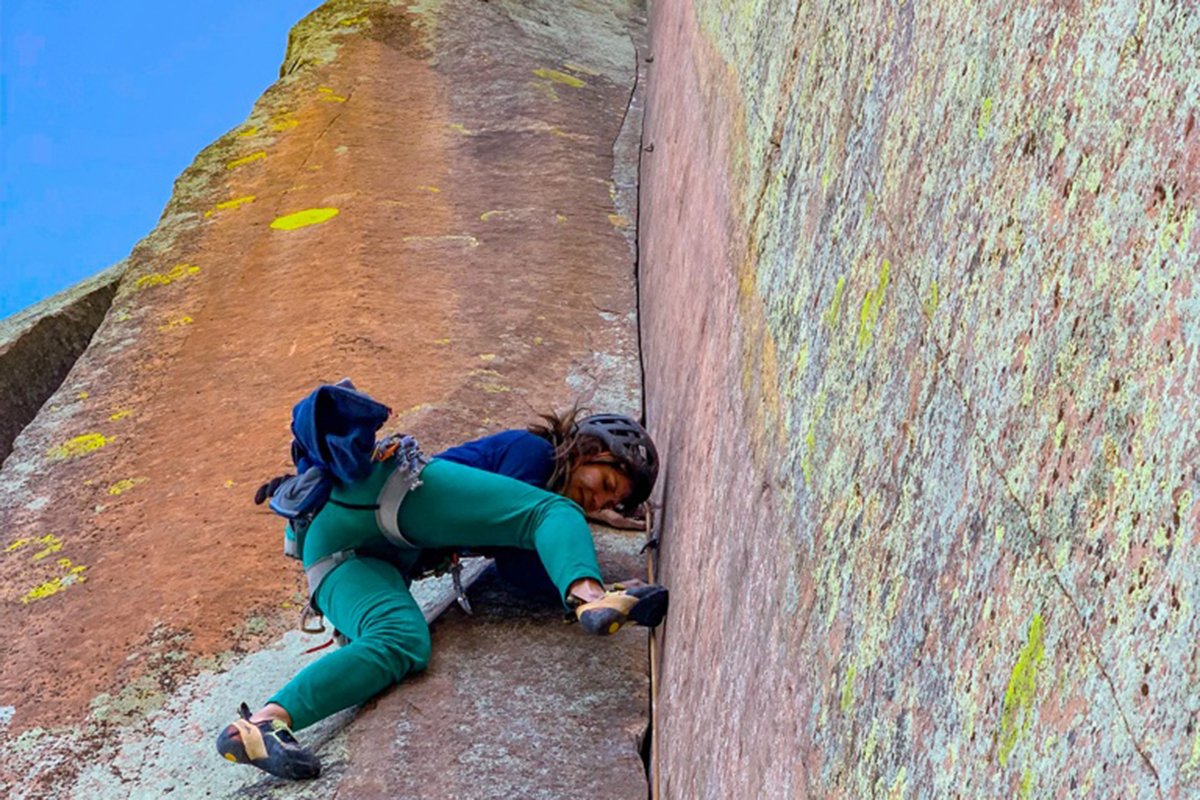
I’m a rock climber for Maxim Ropes, Scarpa and Physivantage, and my destination in Red Rock was the intimidating Rainbow Wall in Juniper Canyon. The fourth highest peak in the Red Rock Canyon National Conservation Area, the Rainbow Wall sits just behind Mount Wilson, and is one of the most prominent natural features of the Red Rock area. At 5,660 feet, the exposed flat wall is visible from the highway outside of the park.
The route we were tackling is an unpublished 13+ trad mixed climb without a second ascent. Juniper Canyon may be one of the most beautiful canyons in Red Rock, but it is also the most difficult to access. Getting to the climb requires either a 2.5 hour hike from outside the park, or an approximately 2 hour hike from the parking lot for Pine Creek. We started the hike from outside, knowing that we may be returning after the park closed due to the difficulty of our objective.
The approach crosses the bushy desert until you reach a long continuous scramble over slippery sandstone boulders. Then, with the aid of a fixed rope, you hulk your gear to the base of the huge slab. The slab itself takes around 30 minutes and just when your calves are screaming for mercy, you reach the bottom of the wall and the start of the route. Needless to say, the hike goes faster without ropes, trad gear, water, and snacks. At this point, I had been up to Rainbow Wall many times, and I knew that once you passed the scramble anything goes. Rainbow wall has a few famous routes, like the Original Route (5.12a) pioneered by Joe Herbst and Larry Hamilton in 1973, but even that climb doesn’t see many ascents despite many attempts. Climbing on rock with so few visitors means all kinds of obstacles come your way, from stuck ropes, to rock fall, to unexpected storms.
Juniper Canyon is like another world. It’s like its own microclimate, constantly disrespecting online weather predictions. Once, we even saw a family of wild skunks out there at midnight. The rare time you may spot another climber or hiker, it feels like a reminder that normal life carries on. This adventure occurred during mid-winter, usually the perfect time to climb. Even though the clouds looked thick that morning, we set out on the approach, determined to tackle our objective.
The two hour hike felt long and slipping on one of the big boulders, I wondered to myself if I was even psyched to climb eight+ sketchy pitches. We stopped for water before the slab and then gritted our teeth starting up the solid sloping sandstone.
“Are those storm clouds?” I asked my partner, as huge dark clouds rolled in out of nowhere.
“Should we turn back?” he asked. I said we should just get to the base and regroup, maybe it would pass, but halfway through the slab droplets started to land around us. The clouds
thinned. We hoped that it was just a warning and not a storm.
The Death Slab
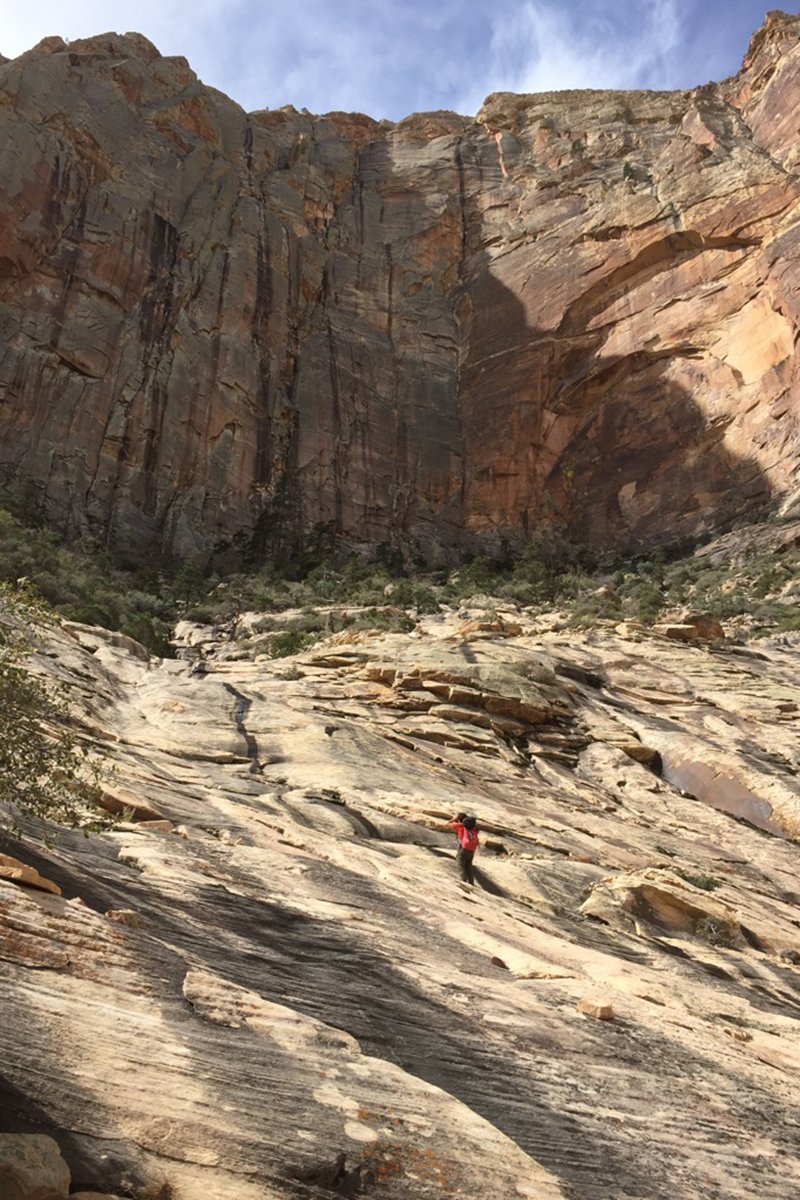
Finally, at the end of the grueling hike, we threw off our packs, and sat at the base of the wall. Occupying the small jagged ledge above the talus field leading down, we chugged water. Judging by the dark sky, we decided to turn back—it’s not only better to climb in good weather, but climbing wet sandstone is a no-no. The delicate nature of this rock means you can cause a lot of damage and increase erosion if you climb it when wet.
About halfway down the slippery slab, the rain started to pour and streaks of electric power lit up the sky. Any desert dweller knows that when lightning strikes, it’s a serious desert storm not the typical threats of rain with measly drops. We hadn’t even packed rain jackets.
The rocky slab was soaked fast, and our shoes slipped. The slab isn’t a cakewalk. It’s probably a Yosemite grade 5.0. Some people even call it the “death slab.” I thought of my friend who had broken his ankle just walking down this very slab, and not even in rain. With huge packs chock-full of gear, I sat down and tried to slide down the slab, but when the steepness kicked in midway, even that was too much without solid feet to catch my body’s momentum. We sat, getting slowly soaked, hoping to wait out the rain and continue, but the rain increased. The slab, now completely soaked, was impossible to descend. Eventually, we made our way to the base of the climb to wait.
No Turning Back
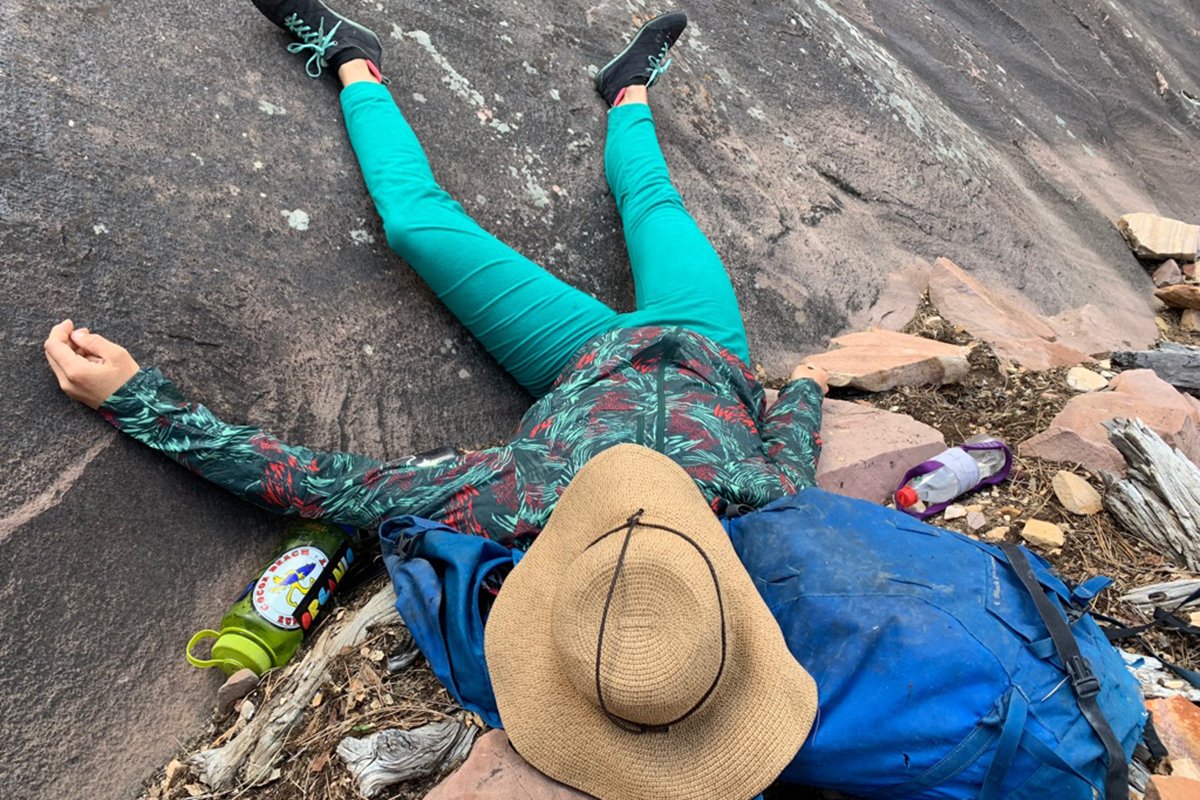
The rain didn’t stop. We were stuck. There was no cell service and no one to contact for help. At the base of the climb, there was no shelter. We searched for a nearby cave but there were none. The talus field didn’t offer any shelter, just exposed steep jagged rocks. With nowhere to hang our emergency tarp, not enough trees and no bolts, we huddled under our jackets.
The winter wind continued to blow rain onto our soaked bodies. I remembered my down jacket was hydrophobic, grateful for slight protection from the wet. The storm eased off but the rock was so wet, there was no way we could safely descend—we had to spend the night. We were at an altitude of almost 6,000 feet and temperatures can drop to as low as 30 degrees Fahrenheit at night up there. We were prepared for winter temperatures when active, but did not have the proper clothing to spend the night if we weren’t moving.
Buried under our coats, the rain continued all night and I lay awake chanting to myself to just make it through until morning. Eventually, my down soaked through and I shivered as my body tried to hold onto the little heat it had. Drifting off and waking, cold, I clinged to the hope that soon the sun would peek through the dark sky. Every once in a while I’d wake up and hear the patter of the rain. I’d check in with my partner, “You still okay?” and he’d mumble. A small puddle of water formed around our bodies – it was official we were submerged. Curling up in a small ball, I felt determined to finish the mission, but the target had changed—the mission was now just to make it home.
The shady north-facing wall offered no sun warming our faces. I had barely slept and my partner less. At the first sign of light, still soaked to the bone, I woke my partner up and said, “We have to go now.” The sun was rising, but the sky was still full of clouds, threatening to strand us even longer.
“I wasn’t sure I was going to make it,” he said. “I didn’t sleep a wink.”
“But we did it,” I said in reply.
The slab had partially dried but I still went down on my butt to keep from sliding and falling. My partner and I traded off going first and helping the second safely down. It took over an hour to just get down the slab.
Finally, standing at the base of the slab, we knew we could make it home.
“Do you want to rest?” my partner asked.
I replied, “No way, let’s get the hell out of here.”
I’ve gone back to the Rainbow Wall since, but not without a waterproof jacket, a more thorough weather scout and a visible check of the clouds. I learned my lesson—don’t try to question Mother Nature, because she will surely win.
Source: https://outdoors.com/stranded-overnight-in-red-rock-canyon/


